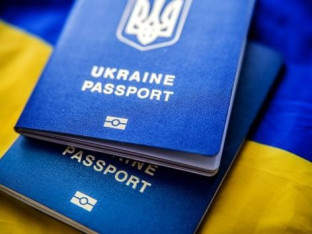I am studying in the third year of the State University of Economics and Technology.I specialize in contractual, economic and corporate law, in particular, I provide consultations and write articles.
The protocol of disagreements is an important document in economic legal relations, which allows to formalize and settle disputes between the parties to the contract. It is important that the protocol is signed by representatives of all parties involved in the contract and kept together with other documents regulating contractual relations. This will help to avoid further misunderstandings and legal disputes.
Content of the protocol of disagreements:
In the protocol of disagreements, various options may be proposed for the settlement of disputes between the parties to the contract. Here is a detailed description of each of these options:
- Exclude certain items:
A proposal to remove certain clauses from the text of the contract, which cause contradictions or which turned out to be unnecessary for the fulfillment of the terms of the agreement.
Reasons for exclusion: May include unreliability of information, incorrect wording, or those clauses that do not correspond to the actual conditions of contract performance.
Procedure: The minutes of disagreement should specify the exact numbers and text of the clauses to be deleted and explain why they should be deleted.
- Set out certain points in the new edition:
Reformulation of existing clauses to more clearly define the rights and obligations of the parties or to eliminate contradictions.
Reasons for change: May include the need to clarify terms, change terms, or correct inaccuracies.
Procedure: The minutes indicate the exact text of the clauses to be rewritten and the new text proposed for replacement. It is important that the new edition is clear and more accurate.
- Replace the words in the clauses of the contract:
Substitution of certain words or expressions in the text of the contract to eliminate ambiguities or to more accurately reflect the intentions of the parties.
Reasons for replacement: May include errors, inaccuracies, or the need to adjust terminology.
Procedure: The protocol should clearly state which words or phrases are to be changed and which new words or phrases are to replace them.
- Add a new clause to the contract:
Adding a new clause to the contract to regulate aspects that were not covered by previous clauses or to specify additional conditions.
Reasons for addition: May include new agreements between the parties, additional terms or the need to resolve new issues that arose after the main contract was signed.
Procedure: The text of the new clause, its place in the contract, as well as the justification for the need to add it must be specified in the protocol.
Each of these options for proposals in the protocol of disagreements helps to structure and organize the process of making changes to the contract, which in turn can prevent further legal disputes and provide clarity in the contractual relationship.
The process of drawing up a protocol of disagreements
- Receiving an offer: An offer is an offer to enter into a contract that contains terms offered by one party (the offeror). It can be the original text of the contract or a draft contract. In the case of receiving an offer containing the text of the contract, and if one of the parties does not agree with the individual terms of this draft contract, it can draw up a protocol of disagreements. It is standard practice to clarify and resolve misunderstandings before the final signing of the agreement.
Analysis of the offer: The party that received the offer checks its terms in detail. In case of detection of discrepancies or disagreement with certain conditions, it must document these contradictions.
Drafting a protocol of disagreements: A protocol of disagreements is a document in which all issues causing disagreement and proposals for their settlement are recorded.- The protocol should contain:
The protocol of disagreements is submitted to the offeror for discussion and agreement. This can be done via e-mail, post or other convenient means of communication.
Discussion and agreement: The offeror reviews the protocol of disagreements and can accept the proposed changes or offer its options. It is important to negotiate to reach an agreement.
Final conclusion of the contract: After reaching an agreement on all disagreements, the parties can sign an updated contract, which takes into account all the changes and additions agreed in the protocol of disagreements. One signed copy of the agreement and protocol of disagreements must be returned to each of the parties. This confirms that both parties have official and certified copies of the documents.
Lawyer services in concluding a contract
Here is how the services of a lawyer can help at various stages of concluding a contract:
- Lawyer consultation:
Analysis of needs and goals: A lawyer will help determine the legal needs and goals of your organization or person, which should be taken into account in the contract.
Clarification of terms: The lawyer will explain the legal terms and conditions used in the draft contract to avoid misunderstandings.
- Legal analysis of the situation and development of documentation:
Checking the draft contract: The lawyer checks the draft contract for compliance with current legislation, absence of legal errors, as well as for the presence of necessary conditions.
Drafting or editing a contract: A lawyer can draft a new contract or edit an existing one to take into account specific conditions and protect the client's interests.
- Negotiations and contract conclusion:
Types of legal services for representation at negotiations: A lawyer can participate in negotiations with counterparties to achieve the most favorable conditions and to protect the interests of the client.
Drafting a protocol of disagreements: If disagreements arise between the parties, a lawyer will help draw up a protocol of disagreements and offer legally sound solutions.
- Legal assessment of risks:
Risk assessment: The lawyer assesses the possible legal risks associated with the terms of the contract and suggests measures to reduce or eliminate them.
Due diligence of the counterparty: The lawyer can carry out a due diligence on the counterparty to confirm its legal and financial reliability.
- Conclusion and signing of the contract:
The correctness of the signature: Lawyers online check the correctness of the signing of the contract in order to avoid errors that could affect its legal force.
Document storage: A lawyer can advise on the proper storage and management of documents after signing the contract.
- Control over the execution of the contract:
Implementation monitoring: A lawyer can help in monitoring the implementation of the terms of the contract and in solving issues that arise in the process of its implementation.
Dispute Resolution: In the event of a dispute or breach of contract, a lawyer can assist with conflict resolution, including mediation, arbitration or litigation.
- Lawyer help for the analysis of changes and additions:
Evaluation of changes: The lawyer services online evaluates any changes or additions to the contract to ensure their compliance with the law and consistency with the main terms.
Preparation of additions: The lawyer can prepare the necessary additions or changes to the contract, taking into account new circumstances or requirements.
The protocol of disagreements records in detail all disagreements that arose during the conclusion of the contract and helps to find a compromise solution or determine further steps to resolve the conflict. A lawyer advice when concluding a contract is important to ensure legal accuracy and protect the interests of the parties. A legal services plays a key role in ensuring the legal purity of the contract and protecting the interests of the client, which is especially important in complex or significant agreements.




































